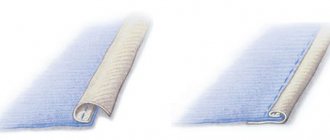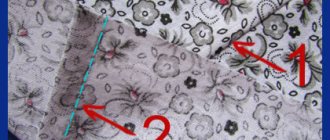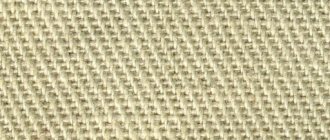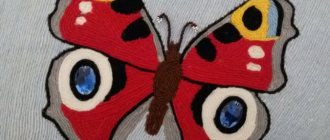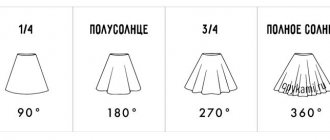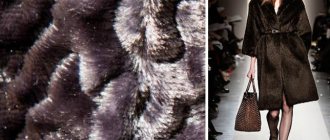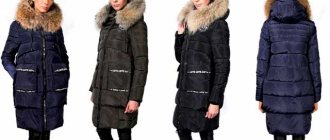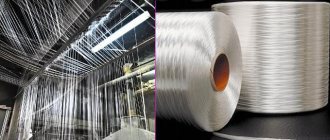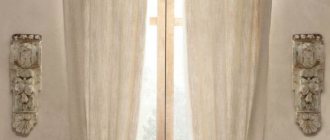A huge range of fabrics are classified according to several criteria:
- by composition;
- by weaving method;
- by appointment;
- by season;
- by finishing.
All woven materials are divided into artificial, mixed and natural based on their fiber composition.
The first are made exclusively from synthetic materials, the second combine natural and artificial raw materials, and the third are completely woven from natural fibers. Most often, natural and mixed fabrics are used for sewing clothes and household items. The group of materials made from natural fibers includes the following types:
- silk;
- cotton;
- woolen;
- cotton
The name of the materials may be the same, but the composition of the fabric may be completely different . This is because the material is often named by its weave, and the same weave is used for all types of raw materials.
Let's look at what types of fabrics are made from natural fibers.
Silk group
The names of the fabrics and their detailed characteristics can be seen in our column “From A to Z”. It is worth distinguishing between natural and artificial silk, since this group includes materials not only from pure silk, but also from mixed and completely synthetic raw materials. Moreover, the share of silk from chemical fibers is more than 90%. This is due not only to progress in the textile industry, but also to the high price of natural silk.
Characteristics of silk fabrics are usually limited to a description of appearance. The material made from silk threads is really very attractive: it shines and shimmers in the sun, light, soft and pleasant to the touch. In addition, silk has high utilitarian properties: hygroscopicity, low shrinkage, and drapes well. This is a light, elastic and durable material.
The production of silk fabric is a very labor-intensive and costly process, so the natural material has a high cost and is highly valued on the market. The raw material for producing silk threads are silkworm cocoons. First, caterpillars are raised, which after a few weeks spin cocoons. Then they are dipped in boiling water and carefully unwound. The result is a matte yellowish thread.
The following types of weaves are used to make silk:
- Satin. The material obtained by this weave, also called satin, has a matte back and a smooth front surface with shine. The disadvantage is increased friability and slipping when cutting. Various combinations of satin weave are used to produce satins and satins.
- Linen. This method allows you to adjust the density of the fabric by increasing the number of threads per inch. The more there are, the more dense the resulting matter is. Names of plain weave fabrics: crepe de chine, crepe georgette, chiffon, toile.
- Twill. The threads intersect with an asymmetric shift, so a diagonal small scar is clearly visible across the entire front surface. Used for the manufacture of lining materials, underwear and bed linen.
- Finely patterned. Derived from the main types of weave. It produces ribbed, diagonal or herringbone material.
- Large patterned. A more well-known name for large-patterned weave fabrics is jacquard. It is woven on special machines with computer programs. The result is material with relief patterns of various types.
- Combined. The combination of different types of weave allows you to improve certain qualities of the fabric.
According to the finishing and color design, silk fabrics can be boiled, gray, plain-dyed, multi-colored, bleached, printed, embossed and mulined.
According to their purpose, silk is divided into subgroups: dress, lining, furniture and decorative, technical, shirt, costume and blouse.
Fabric finishing: what is it?
Fabric finishing is a chemical processing method, sometimes it is done mechanically. In such processes, all kinds of chemicals are used, in contrast to production by spinning and weaving processes, where the fibers are exposed exclusively to mechanical influence.
In the deepest sense of this concept, fabric finishing consists of a set of the following processes - bleaching, dyeing, printing, as well as fabric refining, which is the final stage. In a narrow sense, it represents the final stage, namely the processes of finishing fabrics, drying and widening, eliminating possible distortions in the weft and warp, cutting, smoothing, softening, decating, non-shrink finishing, etc. These are all processes that are designed to improve the quality and appearance of the fabric and help increase the fabric’s resistance to various negative influences during further use.
Cotton group
The history of cotton fabric goes back thousands of years. During this time, the range of fabrics expanded to 1000 items. The material has received enormous popularity for the following properties:
- hygroscopicity;
- low cost;
- wear resistance;
- softness;
- environmental friendliness.
The disadvantages of cotton are a high degree of creasing and shrinkage. To remove these disadvantages, the raw materials for the material are finished or combined with other fibers, including synthetic ones.
Fabric production begins with the collection of cotton bolls. Cotton fibers are then extracted from them, which will become the basis for threads. The longer the fibers, the better the quality of the material. Cotton raw materials are cleaned and sorted. They are then made into threads. The density of the fabric depends on the thickness and method of twisting the threads.
Cotton threads are sized to prevent tearing and increase strength. The spinning mill produces the fabric itself. Most types that make up the range of cotton fabrics are woven using plain weave and its derivatives. Jacquard, finely patterned and other types of weaves are also used. The fabric is initially white due to bleaching. After cleaning the glue, the material is painted or a pattern is applied, if you want to get a fabric with a print. The cotton can then be further processed.
According to its purpose, cotton fabric is divided into household and technical. There are 17 groups of cotton materials: linen, clothing, towel, shawl, lining, teak, dress, furniture and decorative, pile, blanket, gray fabrics, calico, calico, satin, gauze, packaging and technical fabrics.
Chintz is made using plain weave. This is a plain-dyed material or fabric with a pattern obtained by printing.
Calico is a denser and coarser fabric due to the use of thicker threads . Produced in plain weave. This type is heavily sized to improve resistance to wrinkles and shrinkage.
Satins are woven with satin or satin weave. The front surface is smooth. These types of fabric are often mercerized. This is a chemical treatment of threads that makes them silkier, softer and shiny.
The most understandable is the classification of cotton fabrics according to seasonality. This is especially true for the dress group. It includes the following types:
- Demi-season. Fabric production is carried out using plain, twill and finely patterned weaves. Demi-season materials are characterized by greater fabric weight, reinforced structure, thickness and strength. The name of the fabrics of this subgroup often coincides with the names of woolen fabrics. Demi-season items include tartan, crepe, taffeta, poplin, garus, wool, pique and others.
- Summer. Most often it is a lightweight fabric of light colors. Weaves used: plain, jacquard, combined. The range of summer fabrics includes: voile, cambric, voile, percale and many others.
- Winter. This is usually a fabric with a pile or rib. The brushed surface and increased density of the fabric are obtained through the use of backcombed weft threads. This subgroup includes the following names: flannel, flannel, fleece.
Both thick and thin fabric can be made from cotton thread. A variety of weaves and the use of threads of different thicknesses allow you to obtain the most delicate veil and warm flannel. The names of the fabrics often coincide with the names of materials made from silk, wool or linen.
Wool group
The range of this group includes fabrics made from animal wool. Materials containing 100% natural raw materials are considered pure wool, but additions of other fibers and threads are allowed no more than 5%. Fabric production is carried out from sheep, goat and camel wool.
The main property of wool fabrics is the ability to retain heat. The disadvantages are increased dust holding capacity, accumulation of static electricity, difficulties in cutting and sewing products, and high maintenance requirements.
The main classification of wool fabrics is carried out according to the type of yarn used and the manufacturing method. Wool materials are divided into the following main types:
- Worsted. Made from combed yarn. The weave pattern is open. This is a fairly thin fabric made using plain, twill, crepe, and jacquard weaves. The worsted group is divided into three subgroups: dress (crepes), suit (cheviots, tights, bostons, crepes) and coats (gabardines, cover coats).
- Fine cloth. The fabric is produced from machine-made fine yarn. This is a fabric with a pile that covers the weave pattern. Plain, twill, finely patterned and multi-layer weaves are used. This subgroup includes dress, suit and coat fabrics (drapes, cloth). Popularly, thin-woven materials are called ribbed fabric. The density of the fabric makes draping and cutting difficult.
- Rough cloth. Made from thick hardware yarn. Most often it is loose, dense and rough fabric. Used for sewing workwear.
Anti-shrinkage treatment - what is it used for?
Fabric technologists developed this finish back in 1930. Thanks to it, you don’t have to worry that the item will shrink in size after the first wash, as happens with products in the budget segment.
The technology involves performing the following work:
- The fabric is placed inside a special installation and steamed using hot water or steam.
- In this state, without cooling, the fabric is twisted, which helps to relax and compress individual fibers.
Thanks to this finishing, it is possible to reduce the tendency to shrinkage by half. If for ordinary materials the figure is 10%, then after anti-shrinkage treatment it does not exceed 5%.
- Woolen fabric: what types of woolen fabrics are divided into. Characteristics of species and properties
Linen subgroup
Linen fabrics have high strength, hygroscopicity, thermal conductivity and wear resistance. Disadvantages: wrinkleability and difficulty in finishing. Flax is used to make bed and table linen and summer clothing.
According to its purpose, flax is divided into household and technical fabrics. Technical include materials for the manufacture of bags, packaging, canvases and covers. Household materials are divided into the following types:
- Dress and suit. They are made mainly from semi-linen. They are produced in plain, finely patterned or combined weaves.
- Linen. Used for the manufacture of underwear, bed and table linen. The main types of weaves are jacquard, plain and combined.
- Furniture and decorative. Curtain and furniture fabrics of complex weaves. In most cases, it is dense material with a textured surface (geometric, fantasy patterns or ribbed).
- Towels. These include jacquard, waffle, terry and satin towels.
- Special. Dense plain weave fabric, additionally reinforced at the base.
The name of linen fabrics often echoes cotton and silk materials. The assortment includes cambric, teak, calico, tapestry, matting, fine linen and others.
Mercerization – what problems does it solve?
The method involves treatment with a solution of concentrated sodium hydroxide. Soaking is carried out while tensioning the material, and at the final stage the fabric is washed first with hot and then with cold water.
As a result, the dyeability of the material with traditional dyes improves. In addition, the risk of fading during long-term use is reduced, and the overall strength of the material is further increased. In addition, the technology gives the fabric an interesting silky shine and increases resistance to shrinkage.
